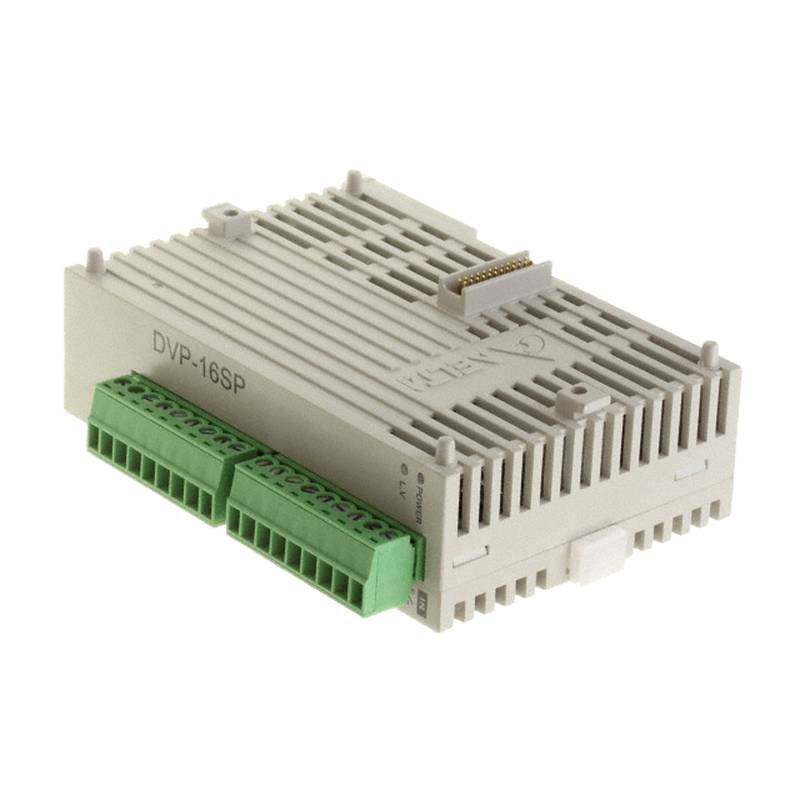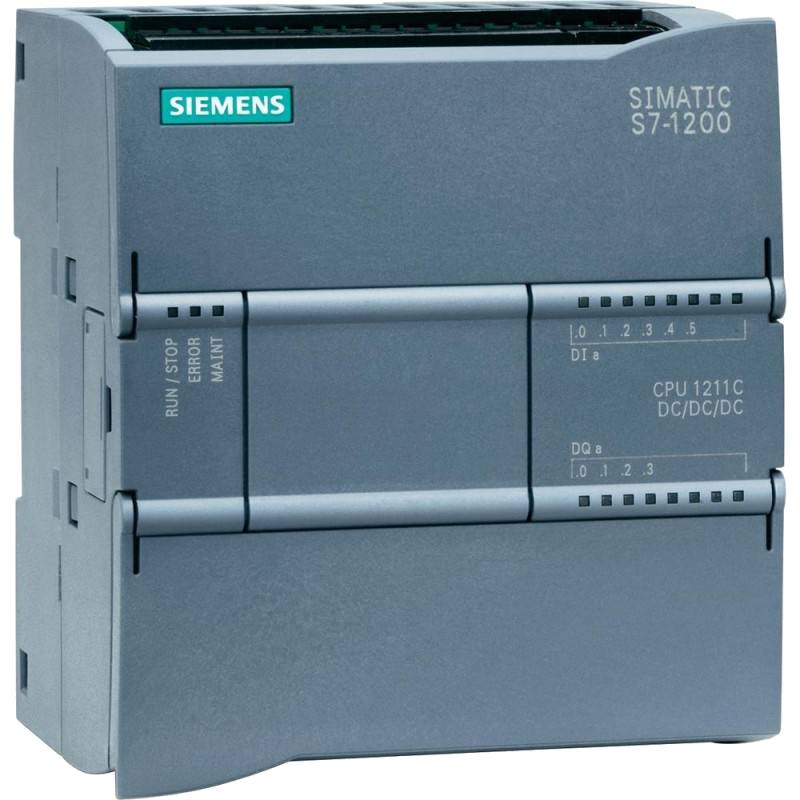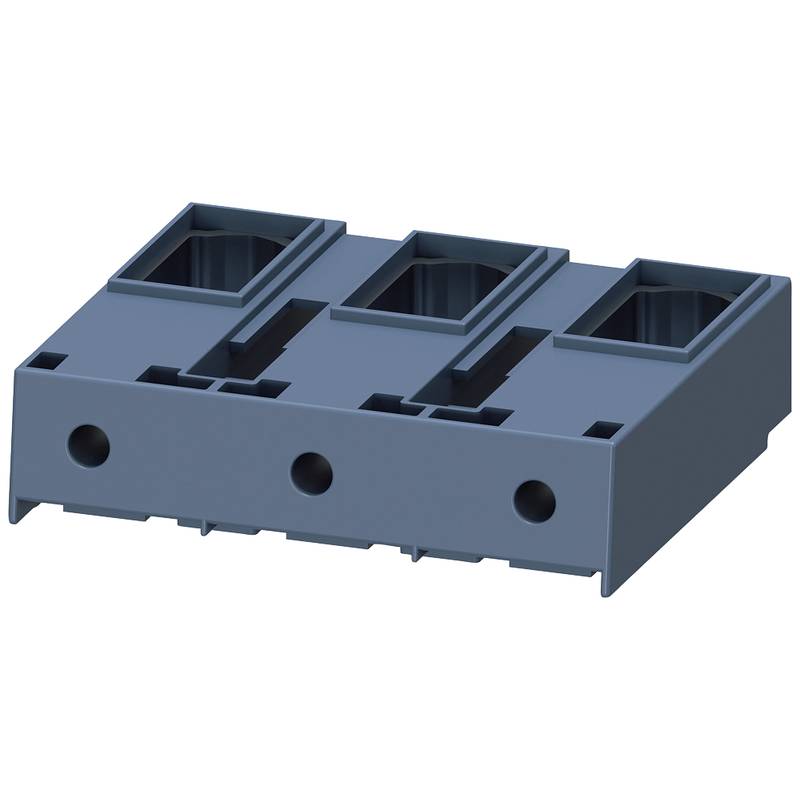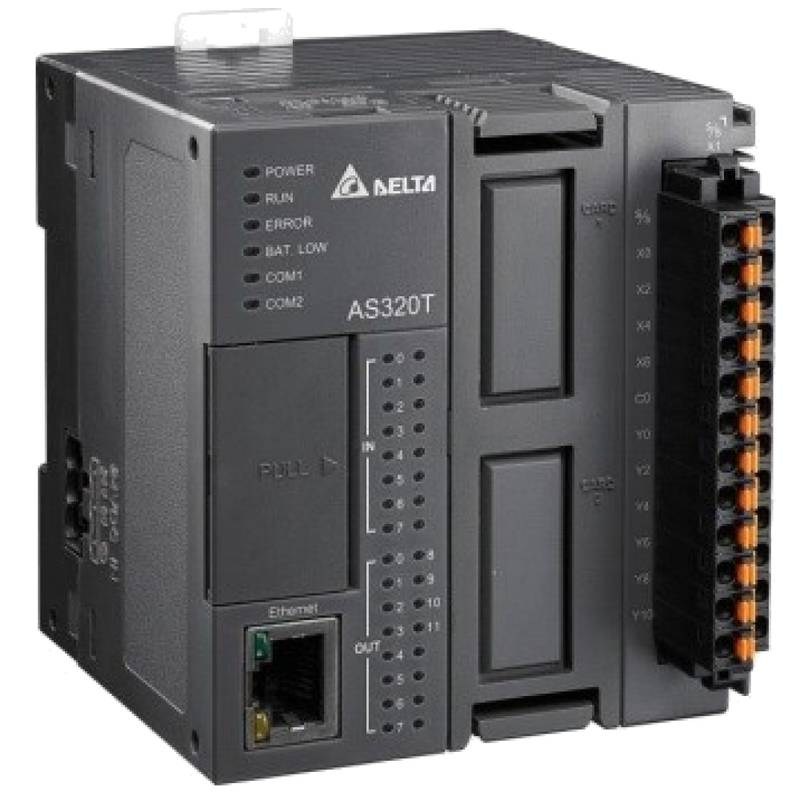
The Delta DVP16HP11R 16-point Relay Output Expansion Module stands as a robust solution for enhancing the control capabilities of Programmable Logic Controllers (PLCs), particularly within industrial automation environments. This module is engineered to provide reliable and versatile output expansion, boasting 16 individual relay outputs, each rated for specific current and voltage loads, and designed for seamless integration with Delta's DVP series PLCs. Its key advantages lie in its high point count, dependable relay switching, and straightforward expandability, making it an ideal choice for applications requiring numerous discrete control signals. Technical parameters such as its operating voltage, output current capacity per point, and physical dimensions are crucial for system design and deployment.
| Feature | Specification |
| :---------------------- | :------------------------------------------- |
| Model | DVP16HP11R |
| Output Type | Relay Output |
| Number of Points | 16 |
| Max. Load Current/Point | 5A (Resistive Load) |
| Min. Load Current/Point | 100mA |
| Max. Load Voltage | 250VAC / 30VDC |
| Isolation | Photocoupler isolation between common terminals |
| Power Consumption | Typically 3.5W |
| Dimensions (W x H x D) | 130 x 90 x 60 mm |
| Mounting | DIN Rail or Screw Mount |
Core Features & Market Positioning
The DVP16HP11R distinguishes itself through its generous 16 relay outputs, offering substantial expansion capacity for PLC systems that may be limited in their native output points. This high density of outputs, coupled with the inherent reliability and electrical isolation provided by individual relays, positions it as a cost-effective and robust solution for diverse industrial control tasks. Unlike solid-state output modules, relay outputs are well-suited for switching higher AC loads or applications where a clean, isolated contact is paramount. This makes the DVP16HP11R a preferred choice in sectors demanding durable and flexible control over machinery and processes. Its compatibility with the DVP series ensures a cohesive and integrated automation architecture, a significant advantage for users already invested in Delta's ecosystem.
Key Application Scenarios
This expansion module finds extensive utility across a broad spectrum of industrial automation applications. It is particularly valuable in machine building, where intricate control sequences necessitate a high number of outputs for activating motors, solenoids, indicators, and alarms. In process control, the DVP16HP11R can manage multiple valves, pumps, and heating elements, providing precise control over process parameters. Its 16 relay points also lend themselves well to building automation systems for managing lighting, HVAC components, and security systems. For users seeking to upgrade existing control panels or expand the capabilities of older PLC systems, this module offers a straightforward pathway to increased I/O density without a complete system overhaul.
Practical System Integration Guidance
Integrating the Delta DVP16HP11R module into an existing PLC system is designed to be user-friendly. It typically connects to the master DVP PLC via a dedicated communication bus, often requiring a simple ribbon cable or terminal connection. When wiring the output relays, it is crucial to adhere to the specified maximum load current and voltage ratings to prevent module damage and ensure operational safety. For example, each relay point can handle up to 5A resistive load at 250VAC. Proper grounding and wiring practices are essential to minimize electrical noise and interference. Programming involves configuring the PLC's software to recognize and address the additional output points provided by the expansion module, a standard procedure within Delta's WPLSoft or similar programming environments.
Operation and Risk Mitigation
The operation of the DVP16HP11R module is governed by the PLC's control logic, which dictates when each relay output is energized or de-energized. Users must ensure that the load connected to each output does not exceed its specified limits (e.g., 5A resistive load). Overloading can lead to premature relay failure, component damage, or fire hazards. It is also important to consider the inductive nature of some loads (like motors or coils) which can generate voltage spikes when switched off; appropriate surge suppression may be necessary to protect the relay contacts. Regular inspection of wiring and connections, along with adherence to environmental operating conditions (temperature, humidity), will contribute to the module's longevity and prevent common issues.
Scalability & Long-Term Value
The DVP16HP11R module offers significant scalability by allowing users to expand their PLC's output capabilities incrementally. This modular approach means that automation systems can grow alongside operational demands without requiring a complete replacement of the PLC hardware. Its compatibility with the Delta DVP series ensures that it can be integrated with various master PLCs within the range, providing a unified and coherent system architecture. As industries move towards greater connectivity and the Industrial Internet of Things (IIoT), the robust and reliable output control provided by modules like the DVP16HP11R serves as a foundational element. This ensures that processes can be monitored, controlled, and optimized through digital platforms, delivering long-term value and operational efficiency.
*
Frequently Asked Questions (FAQs)
Q1: What is the maximum current rating for each relay output on the Delta DVP16HP11R?
The Delta DVP16HP11R module supports a maximum load current of 5A per relay output when handling resistive loads. This specification is critical for selecting appropriate actuators and ensuring the longevity of the module.
Exceeding this 5A limit, especially with continuous or inductive loads, can lead to overheating and premature failure of the relay contacts. Always consult the load's power requirements and factor in potential inrush currents for inductive loads.
For inductive loads, consider using external relays with higher ratings or employing surge suppression circuits across the load to protect the DVP16HP11R's contacts from voltage spikes.
Q2: Can the Delta DVP16HP11R be used with PLC models other than the Delta DVP series?
While primarily designed for seamless integration with Delta DVP series PLCs, compatibility with other PLC brands is generally not guaranteed or supported. The communication protocols and physical connectors are specific to the Delta ecosystem.
Using the DVP16HP11R with non-Delta PLCs would likely require custom interfacing solutions, potentially involving intermediate modules or complex wiring. This is typically not recommended due to potential compatibility issues and lack of vendor support.
For optimal performance, reliability, and ease of integration, it is strongly advised to use the Delta DVP16HP11R exclusively with compatible Delta DVP series PLC models.
Q3: What type of loads can be controlled by the Delta DVP16HP11R relay outputs?
The Delta DVP16HP11R relay outputs are versatile and can control both AC and DC loads, provided they remain within the specified voltage and current limits. This includes resistive loads like heaters and incandescent lamps.
They are also suitable for controlling inductive loads such as solenoid valves and motor contactors, though careful consideration of inductive kickback and potential need for surge suppression is advised. The minimum load current is 100mA.
When switching AC loads, the maximum voltage is 250VAC, and for DC loads, it is 30VDC. Always verify that the connected device's power consumption falls within these parameters.
Q4: How is the Delta DVP16HP11R expansion module physically installed?
The Delta DVP16HP11R is designed for flexible mounting options. It can be securely attached to a standard 35mm DIN rail, a common method in industrial control cabinets for easy installation and removal.
Alternatively, the module can be mounted directly onto a panel using screws. The module typically includes mounting holes for this purpose, offering flexibility based on the available space and cabinet design.
Ensure adequate ventilation around the module during installation to prevent overheating, especially when operating at or near its maximum load capacities.
Q5: What is the minimum load current requirement for the Delta DVP16HP11R relay outputs?
The Delta DVP16HP11R requires a minimum load current of 100mA to ensure proper operation and reliable contact closure for each relay output. This threshold is important for very low-power devices.
Operating below this minimum current may lead to intermittent connections or failure of the relay to properly activate, especially in environments with potential electrical noise. Always check the current draw of small loads.
If you need to switch loads significantly below 100mA, consider using a small auxiliary relay or a solid-state output module designed for such low-current applications.
Q6: How does the Delta DVP16HP11R connect to the master PLC?
The Delta DVP16HP11R typically connects to a compatible Delta DVP series master PLC via a dedicated communication bus. This connection is usually established using a specialized ribbon cable or a terminal block adapter.
This bus communication allows the master PLC to send output commands to the expansion module and receive status information if applicable, effectively extending the PLC's I/O capacity seamlessly.
Refer to the specific master PLC's manual and the DVP16HP11R's documentation for the correct cabling and connection procedure to ensure proper data exchange.
Q7: What is the maximum voltage rating for the relay outputs on the Delta DVP16HP11R?
The relay outputs on the Delta DVP16HP11R module have a maximum switching voltage rating of 250VAC for alternating current and 30VDC for direct current. Adhering to these limits is crucial for safe operation.
Applying voltages beyond these maximums can cause arcing across the relay contacts, leading to contact welding or premature failure. Always confirm the voltage requirements of the devices being controlled.
Ensure proper insulation and wiring practices are followed to prevent voltage transients or surges that could exceed these operational limits.
Q8: Does the Delta DVP16HP11R offer isolation between output points?
Yes, the Delta DVP16HP11R module provides photocoupler isolation between the common terminals of its relay outputs. This isolation is a key feature for protecting the master PLC from electrical noise and voltage transients.
This separation of circuits enhances system reliability and safety by preventing ground loops and electrical interference from affecting the PLC's sensitive internal components. It also allows for different voltage potentials across common terminals.
The isolation is typically between groups of outputs sharing a common terminal, but individual relay contacts are electrically separated from the PLC's control circuitry.
Q9: How does the Delta DVP16HP11R contribute to system scalability?
The DVP16HP11R is designed for modularity, allowing users to easily add more relay outputs to their Delta DVP PLC system as needed. This avoids the need to replace the entire PLC for simple I/O expansion.
By daisy-chaining or connecting multiple expansion modules to a master PLC, users can create highly customized and scalable automation solutions that adapt to evolving production requirements. This lowers the overall cost of system upgrades.
This expandability ensures that automation investments remain relevant and cost-effective over the long term, supporting future growth and integration of new equipment.
Q10: What are the typical power consumption requirements for the Delta DVP16HP11R?
The Delta DVP16HP11R expansion module typically consumes around 3.5W of power during operation. This power consumption needs to be factored into the overall power budget of the control system.
It's important to ensure that the PLC's power supply can adequately handle the combined load of the master PLC and all connected expansion modules, including the DVP16HP11R.
This relatively low power consumption makes it an energy-efficient choice for expanding output capabilities without significantly increasing the system's overall electrical load.
























